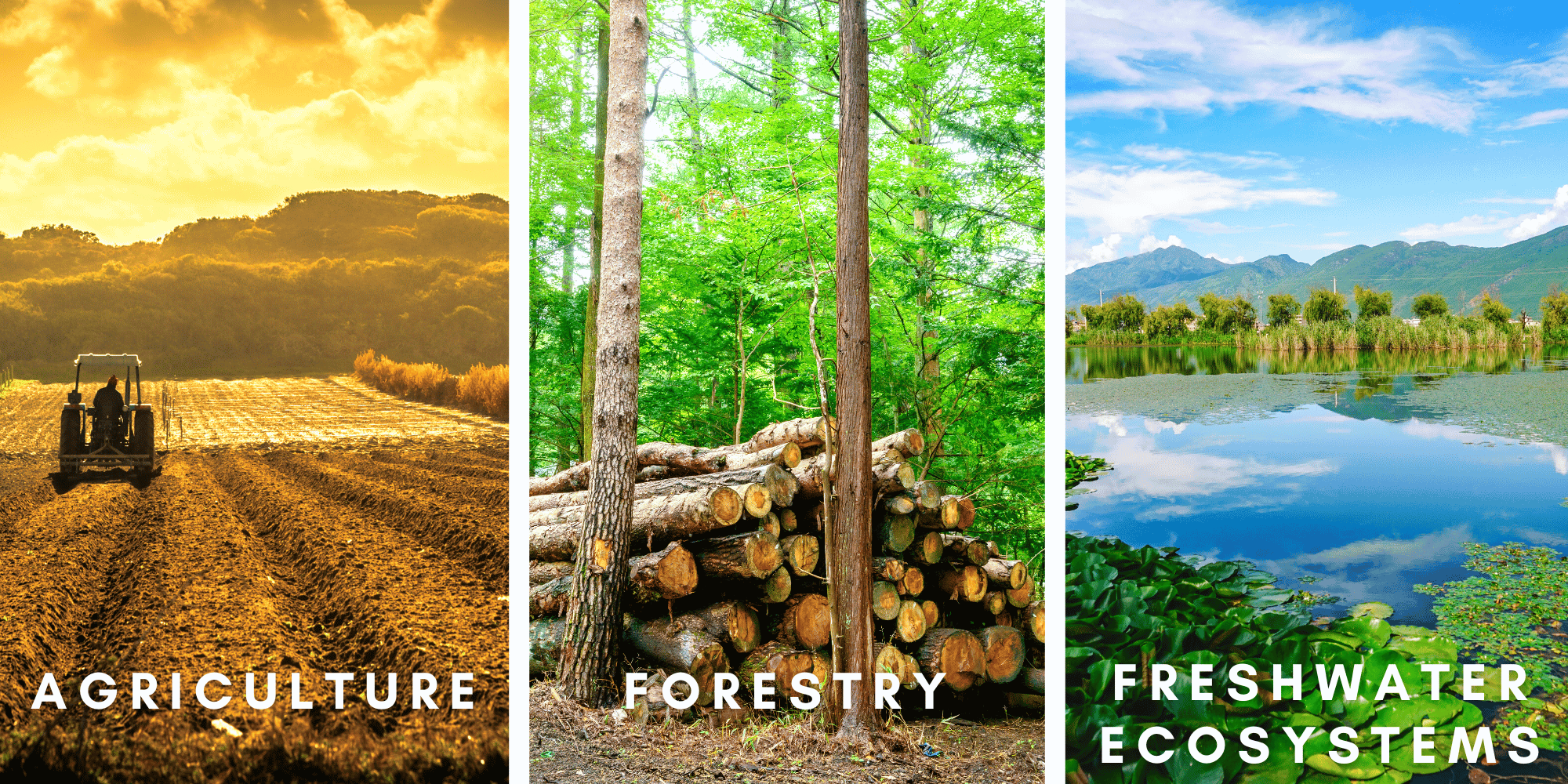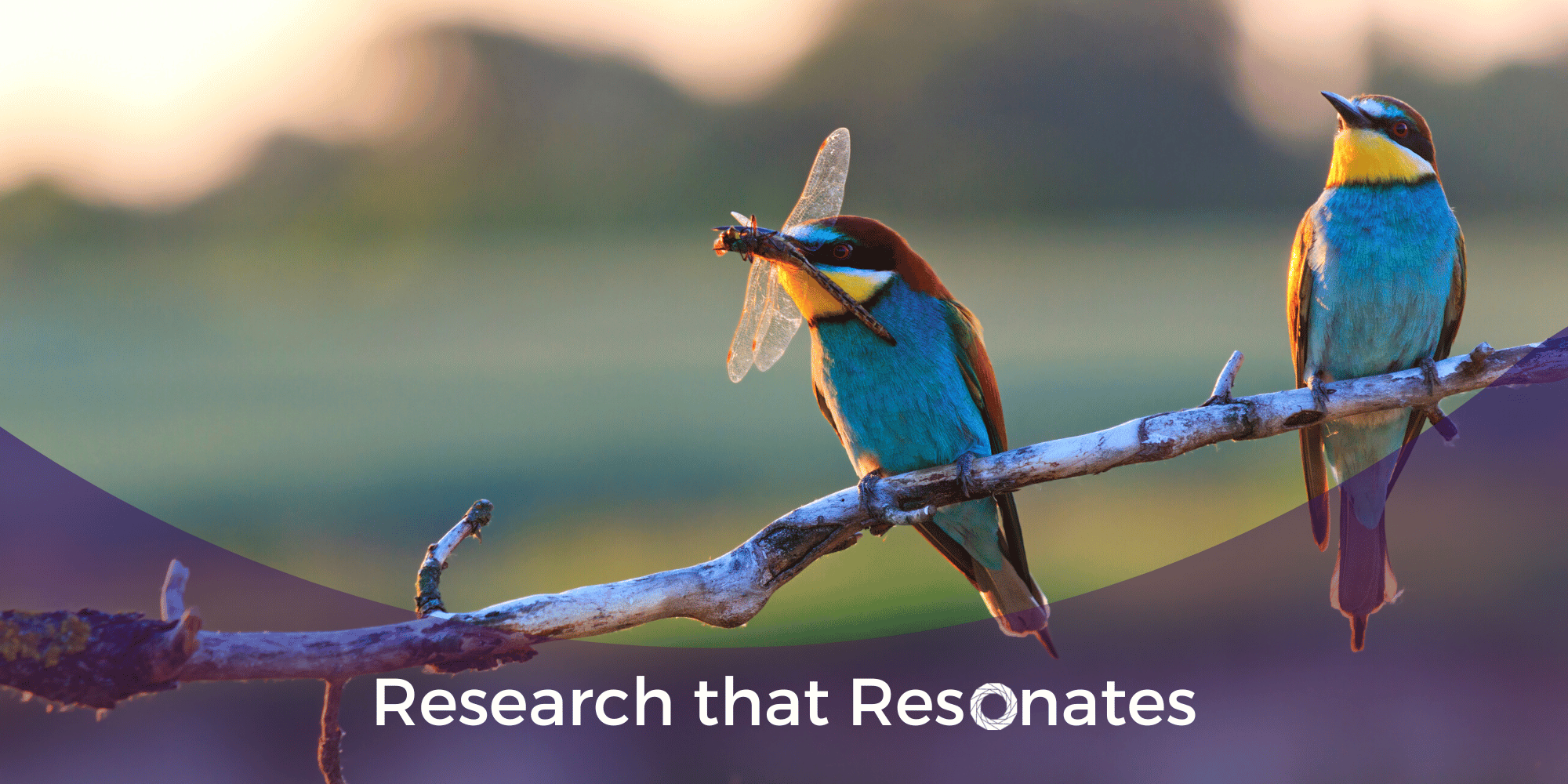This is the fourth in our series of Insights under the banner ‘Research that Resonates’ in which we introduce a recently published research or scholarly article that may be of interest to our readers and to our work in global development and sustainable impact, but typically sits behind a paywall. Our Insights are an attempted bridge to that work, and we encourage readers to examine the original articles in our series for depth and further examination.
Background: Biodiversity, COP15, and the 30x30 Initiative
Resonance co-founder and Chief Innovation Officer (CIO) Steve Schmida meets quarterly with sustainability officers (SOs) and leaders as part of our Sustainable Impact roundtable series, many with heavily invested AG supply chains, to gain firsthand insights on what they are experiencing as they address breakpoint change in the face of wicked problems like climate change and sustainability.
Given this ongoing and valued dialogue, there was little surprise when the 15th Conference of the Parties (COP15) to the United Nations Convention on Biological Diversity (CBD) held in Montreal December 2022 resulted in a multi-national pledge to address potential mass extinction of many plant, insect, and animal species across the globe. SOs had been anticipating the addition of biodiversity goal integration and inclusion of measurement and roadmaps to their already ambitious undertakings as part of sustainability, ESG, and Scope emissions goals and initiatives.
The Kunming-Montréal Global Biodiversity Framework is a historic global framework to safeguard nature and halt and reverse biodiversity loss, putting nature on a path to recovery by 2050. In the US, President Biden signed an EO, commonly known as the “30x30,” committing the country to protect and conserve 30% of U.S. lands and waters by 2030.
Experts and stakeholders agree the overarching goals as conceived are ambitious, and that in addition to collaboration across the globe, meeting landmark aims will require innovative capital investment and financing mechanisms. Also understood is that to achieve benchmarks, strategic, cross-sector partnerships and a commitment to capacity-building that is inclusive and equitable may result in the most meaningful outcomes, if not the most enduring sustainable impact over time.
This will require not only the development of metrics, which like biodiversity, will be complex and thus immensely challenging, but also an expansive governance toolkit that leverages innovative approaches, strategies, and tech transfer that works, can be tailored, scaled, and by necessity, with some degree of expediency.
In writing about these requisites and imagining all that SOs must address as part of their respective organization’s commitments, one thing is clear: it’s a tall order.
Article Focus on Mainstreaming Biodiversity
In introducing their timely January 2023 article in Biological Conservation entitled, Mainstreaming Biodiversity in Business Decisions: Taking Stock of Tools and Gaps, Drs. Pamela Giselle Katic, Stefania Cerretelli, Jeremy Haggar, Truly Santika, and ConorWalsh recognize the lively debate over best practices and strategies that has been taking place even before the emergence of 30x30.
The authors call attention to the significant growth in recent years in the adoption of tools for mainstreaming biodiversity into business decisions across a variety of sectors as a requisite for promoting sustainable business. This is a nod not only to the fact biodiversity considerations and impacts are inherently part of many organizations’ operations and supply chains, but also noting in parallel to UN SDGs, ESG, and Scope Emissions work, there is growing external momentum for the private sector to compete on non-price-factors.
Factoring in social and environmental sustainability alongside economic drivers holds the promise, many believe and the authors affirm in sentiment, to incentivize the adoption of enduring sustainable impact practices that will result in impelling ‘business’ to play a greater role in biodiversity conservation.
What Constitutes “Tools” in Assessment of Biodiversity?
The research team offers in their published work a broad overview of current trends across a selection of tools and approaches that assess biodiversity performance across different businesses by “measuring risk, dependencies, and impacts (positive and negative) for internal decision-making (e.g., relating to risk management and accounting), and/or to meet a variety of external reporting requirements (e.g., certification, non-financial disclosure, and regulation).”
Their approach includes a thorough literature review (and the published works and debates on metrics and tools is plentiful) and interviews of tool developers to assess how tools are constructed, how they measure biodiversity performance, how and where they are being used by different organizations, and how they contribute to achieving international targets for biodiversity.
In defining ‘tools,’ the authors suggest broad parameters, stating most share similar aims of providing an assessment or score of the impact associated with an organization’s activities and/or performance, and include methodologies that accept information on user activities and their relevant regional context.
These translated ‘biodiversity impact scores’ are typically based on one of two overarching schematics: (1) performance against established threshold conditions (e.g., the number of endangered species), or (2) a characterization process (i.e., assuming a defined relationship between activity and impact).
Tools may have additional objectives, note the authors, associated with determining dependence on biodiversity or impact of conservation or restoration activities.
The research team emphasized the fact that there has been a “proliferation of research and practice multistakeholder initiatives, platforms and coalitions to advance the development and uptake of biodiversity measurement approaches and tools by businesses and financial institutions.” These include, among others:
- The Global Partnership for Business and Biodiversity hosted by the Convention on Biological Diversity (CBD)
- The European Business and Biodiversity Platform (EU B@B Platform)
- The work Programme on Business and Biodiversity by the Intergovernmental Science-Policy Platform on Biodiversity and Ecosystem Services (IPBES)
Other consortia, the authors add, have developed guidance more recently to assist business organizations in the assessment of the risks and opportunities that biodiversity presents to their strategy within a broader sustainability scope. This includes the International Institute for Sustainable Development (IISD, 2017), the ISEAL Alliance (ISEAL, 2020), the Climate Disclosure Standards Board (CDSB, 2021), and the Taskforce on Nature-related Financial Disclosures' LEAP approach (TNFD, 2022).
Why and How this Research Resonates
With the recent COP15 agreement and published Kunming-Montréal Global Biodiversity Framework, as well as the 30x30 initiative, it is anticipated there may be more guidance and oversight emerging, which will certainly add to potential uncertainty among companies as actors in the space grapple with challenges like standardization, consistency, equity, inclusion, risks, costs, governance, decision-making agency, and the uncertainty of complex, dynamic, fragile, and unpredictable, intertwined natural systems.
These are some of the challenges our clients and sustainability leaders are facing.
The authors utilize as their theoretical framework a ‘company-centered intra-organizational value creation model.’ Without explaining in great depth (we encourage you to explore by reading the full article if you are interested), their examination began with an assessment of an organization’s rationale to respond strategically to biodiversity risk, which includes deliberate attention to both a company’s impacts and dependencies on natural capital as equally important strategic constraints.
Through this lens, biodiversity and final ecosystem services are sources of risks and opportunities for an organization’s future financial position and financial performance. Biodiversity “decisions” then (which include identification, adaptation, and implementation of tools) include “links between business strategy, opportunities, value propositions, primary customers, key activities, and services offered and resources and costs.”
Add the authors, “This framework places business activities within a systems perspective where businesses may also seek to compensate for, offset and mitigate their impacts.”
After assessing 33 of the most widely-used tools by the private sector using a rapid scoping exercise and characterizing the tools according to function, scale, and sector of interest, 14 tools were selected for an in-depth review. This narrowing down was intended to enable comparison of tools that perform similar functions across three critical sectors, (1) agriculture; (2) forestry; and (3) use of freshwater ecosystem services. 
Key Takeaways
Following this review, the authors offered several key findings and discussion including the following key takeaways that resonate with the work we do at Resonance, and of what we hope is interest among the sustainability leaders with whom we collaborate:
- There is wide diversity in approaches currently being used by businesses and different sectors to mainstream biodiversity, and likewise, vast ways in which biodiversity itself is represented and in different ways. The authors indicate, “There is also wide variation in the scale used by the tools (from farm to corporate to value chain), as well as the sectors which are targeted by the tools (from agriculture to water and biofuels, among others).” Most are applied at product, site, and supply chain level.
- The authors appropriately point out the cautionary limitations of many of the tools assessed, noting that most are driven by, and for, private sector actors, and are thus often developed outside the direct influence and input of public policymakers. Given the recent momentum behind global commitments and corresponding national framework emergence, this is likely to change. However, until then, there remains a great deal of variability across tools, without much opportunity for comparison or alignment among the differing methodologies.
- Most of the tools examined by the team do include some assessment of the status or impacts on biodiversity associated with the business, such as the likely presence of protected species, though some incorporate proxies in lieu of more direct measurement. Some assessment is locationally predictive (e.g., specificity of geospatial biodiversity assessment that attempts to predict the biodiversity that may be lost if that location is developed or saved if the location is conserved). However, tools vary in approach, or how this is done, and the times scales involved.
- Often expert interpretation of assessment results is required, particularly when using tools with global application, such as IBAT, which provide proximity indices of “likely presence of threatened species” or “protected areas with a range of distances from a point location.” These assessments can generate long lists of threatened and endangered species, including those in out-of-range sites, which necessitates not only expert assistance and analysis, but also careful documentation to avoid areas of importance for biodiversity and inform decision making.
- There are some, but limited, sets of tools to assess actual or potential improvements in biodiversity that may mitigate losses assessing biodiversity impacts based on a mitigation hierarchy; others not only acknowledge options to manage impacts, but also assess the potential impacts of such actions.
- A distinct approach to assessing potential effects on biodiversity is employed by sustainability standards developed, maintained, and verified by outside entities. Many of these have in common inclusion of well-developed principles, criteria, and standards regarding conservation of biodiversity, identification of high conservation value areas, identification and protection of endangered species, as well as a suite of science-based practices that are intended to reduce or mitigate impacts on biodiversity. Many include third-party assessment to verify adherence or compliance as part of the certification process.
- All of the tools examined with depth seek to inform management decisions at different (spatial and temporal) scales with respect to biodiversity, although the guidance supporting tool use varies considerably in depth and detail.
What Businesses Need to Consider in Mainstreaming Biodiversity with Business Goals
As businesses seek to mainstream biodiversity in business decisions, the authors note there are several approaches, each reliant on several considerations. These include:
- Considerations of the many, varied inputs (e.g., sectoral-specific impacts, the presence of organizational policies to address biodiversity loss or share good practices, significant and diverse information and data);
- Considerations of biodiversity pressures that are material to the company;
- Considerations of alignment of the types of results generated with established performance and impact metrics and strategies;
- Considerations of the ways in which approaches used link biological, ecological, socio-economic factors and assessment of tradeoffs;
- Considerations of how to manage the implications of indicator aggregation (e.g., “when a moderate reduction in harmful activities results in an improved score but there is no guarantee the scale of the impacts are sufficient to effect a meaningful change in biodiversity outcomes”).
In further discussion and conclusion, the authors note that the although their paper does not aim to answer the critical question - "What are the actual impacts of these initiatives on biodiversity, and where are these impacts occurring,” it does in its assessment of tools linked with commonly-used indicators of the 'state of biodiversity' offer a first step to better understanding the potential contribution of tools to biodiversity conservation.
At the same time, there is immense work to be done to support and require businesses to internalize externalities and integrate their impact and dependencies on biodiversity in decision-making. This requires suggest the authors, a “scale-up of efforts for the development and operationalization of frameworks to harmonize methods and standards within an integrated business management approach, rather than an isolated or ad-hoc approach to tool use.”
Even with this aim, it is critical to understand that tools are only partially aligned with global targets for biodiversity protection. With growing pressures and new global commitments, the authors advise:
"There is a growing need to develop a common view among key stakeholders on the measurement, monitoring, and disclosure of corporate biodiversity impact and dependencies to help integrate more credible and comprehensive indicators of corporate contribution to global biodiversity goals into corporate reporting and global policy frameworks.”
They suggest we are on that very cusp of this reality, with exciting initiatives evolving to mainstream biodiversity considerations as part of business practices to advance conservation. They echo a universal call for ongoing research and collaboration around standardization debates, policy options, capacity building, cross-sector partnerships, research, innovation and implementation funding (including often marginlized communities impacted), and a concerted effort to generate evidence on how to assess and address critical capacity gaps.
The sustainability leaders participating in our roundtables have expressed the same, and we hope to be integral to this important cross-sector work of driving long-lasting and meaningful sustainable impact at the nexus of climate change and biodiversity.



